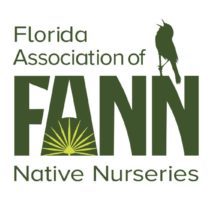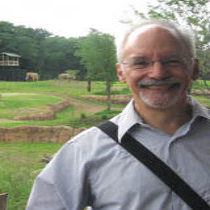Landscape Architecture for Landscape Architects › Forums › GENERAL DISCUSSION › Abundance of Florida Plants
- This topic has 1 reply, 9 voices, and was last updated 12 years, 10 months ago by
 Landon Davidson.
Landon Davidson.
-
AuthorPosts
-
November 12, 2009 at 9:34 pm #172337
 Jim Del CarpioParticipant
Jim Del CarpioParticipantHi,
I’m fairly new to Southern Florida and Its intimidating to learn the numerous Tropical Plants. Has anyone had a similar experience and how did they approach to learn them all. Is there a program(Software or Cd’s) I can purchase or borrow to learn to identify, etc…
Thanks
November 13, 2009 at 3:37 am #172348 Landon DavidsonParticipant
Landon DavidsonParticipantA super effective and relatively cheap option is to take the local community college plant class. Here in Las Vegas they always have not for credit courses offered throughout the year. You could also contact the local extension service. Their plant guru’s will likely know who to talk to or where to look. Good luck.
November 13, 2009 at 4:07 am #172347Steve Roberts
ParticipantWell when I first moved to Florida I felt overwhelmed too. But I learned to love the diversity of the plant life, and came to call it “Paradise“. Palm trees were the hardest for me to get used to, but eventually I could pick them all out and tell you all about them. I did however have some help from co-workers and a few good books. “Florida my Eden” by Frederic B. Stresau is an essential staple for South Florida. I would suggest subscribing to “Plant Finder” magazine by Betrock. Plant Finder magazine publishes current prices, availability, and quantities of plant materials available from local growers. Here is a link to their website. http://www.plantfinder.com/ They produce the best books on Palm Trees if you want to learn more about them. They have plant selection software available for purchase as well. I am a big fan of Ed Gilman. He is a professor at the University of Florida. He writes books about Florida plants, and has a directory of online plant fact sheets. Here is a link the website. http://hort.ifas.ufl.edu/woody/factsheets.shtml Another good book that he wrote is “Betrock’s Florida Plant Guide”. I hope that this helps out. I really miss Florida, and the weather. Enjoy! I read on one of your other posts that you were studying for sections C and E of the LARE. Did you pass?
November 13, 2009 at 11:58 am #172346Jacqueline Trainer
ParticipantI lived in south Florida back in the ’90’s. I now live in New England. The book that I used was Florida Landscape Plants by John Watkins and Thomas Sheehan. Enjoy! I miss all those wonderful plants.
November 13, 2009 at 4:07 pm #172345 Jim Del CarpioParticipant
Jim Del CarpioParticipantSteve,
Yes I passed Section C and D andI re-taking E this December. Just got back from the redline review of E and I feel confidant I will pass in December and soon afterwards take Florida Section. I will take your suggestion to heart and follow thru on them. The weather today is sunny and cool, just picture perfect.
Thanks,
November 13, 2009 at 4:21 pm #172344 Jim Del CarpioParticipant
Jim Del CarpioParticipantIn addition to my original post, I’m seeking add a Florida Plant Database that I can implement to VectorWorks Landmark. Any suggestions.
Thanks,
January 21, 2013 at 9:55 pm #172343 Cammie DonaldsonParticipant
Cammie DonaldsonParticipantHi Jim, just thought I’d let you know that we are hosting the nation’s first ever NATIVE PLANT SHOW, an all native plant tradeshow, April 4-5, 2013 in Kissimmee and we have CEU courses covering South Florida indigenous plants and will have a huge collection of plants for you to see and talk with growers. http://www.nativeplantshow.com
January 21, 2013 at 9:56 pm #172342 Cammie DonaldsonParticipant
Cammie DonaldsonParticipantResource for Florida native plants:
http://www.floridanativenurseries.org/info/native-plant-service-directory/
January 22, 2013 at 11:48 am #172341 Rob HalpernParticipant
Rob HalpernParticipantLearning the plants is, of course, essential.
But so is learning the vagaries of Florida micro-climates. Plants that will grow in Miami might not survive 75 mile inland.
A course would help you discern such differences.
January 26, 2013 at 5:22 am #172340 tobyParticipant
tobyParticipantYeah, speaking of discerning the differences… I remember a spring plant ID course that started when it was still winter, and we had to figure out if the buckeye was glabra, pavia, or sylvatica by the bark, branching, and bumps on the leaf buds alone.
Those teaching assistants were just cruel. But I learned to feed the inner geek.
January 29, 2013 at 4:22 am #172339 Jamie ChenParticipant
Jamie ChenParticipantI went from SoCal to Maui and then from Maui to Tacoma, WA in my career so far.
There’s something very visceral about visiting a good, large local nursery and just wandering around, taking photos and touching and smelling the plants.
Then, after I got home, I’d arrange the photos into my own plant catalog, looking up typical mature sizes and particulars about cultivation. Getting the price list from the nursery itself doesn’t hurt if you’re designing on a budget either!
January 29, 2013 at 2:30 pm #172338Ernst Glaeser
ParticipantHi Jim,
My best experience over years was to visit the local Botanical Gardens and other Open to the Public Private Gardens established “long time back”.
These people tried a lot, and what you see now are the successful plants.
The danger with books and similar material is that they very often paste and copy, especially the mistakes. Reg Ernst
-
AuthorPosts
- You must be logged in to reply to this topic.


